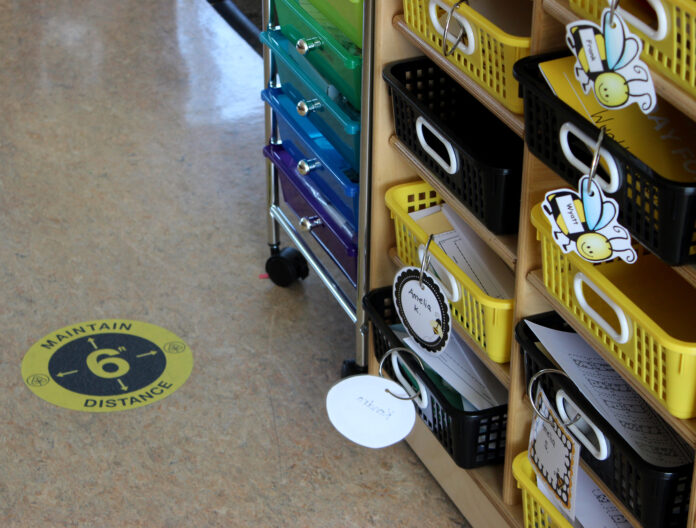Communities all over the state are reporting impacts on enrollment and test scores for school-age children in the wake of the COVID-19 pandemic, but Sonoma County has released a sobering, detailed report focusing on kindergarteners there and how they are faring post-pandemic.
Only one in five children in Sonoma County were ready for kindergarten when they entered school last fall, according to a report released Wednesday, April 26, from the county Department of Human Services (DHS). Many of the educational disparities fall along ethnic, racial and economic lines, the report said.
Kindergarten readiness declined in the county for the sixth consecutive year, according to the report entitled “Road to Early Achievement and Development for Youth,” or READY, which was initiated by the county DHS and the First 5 Sonoma County Commission, a body that allocates county funds for early education.
Overall, only 22% of Sonoma County children were ready for kindergarten last fall, down from 31% the previous year and 41% in 2016.
The county said the decline can be attributed to repeated wildfires, floods and the COVID-19 pandemic, all of which the county describes as “emergencies that have disrupted early-learning programs and taken a toll on many families’ health and finances.”
During the first nine months of the pandemic, more than 200 of the 608 childcare and preschool facilities in the county closed, the county said.
“Today, about 7,800 children are enrolled in local day care and preschool programs, down from nearly 12,800 before the pandemic,” the county said in a news release about the report.
“We are seeing the decline in kindergarten readiness play out in our schools,” Amie Carter, Sonoma County superintendent of schools, said in a statement. “Students who enter kindergarten unprepared are more likely to struggle academically, and we know how vital the first years of school are in ensuring our children can read well enough to support learning.”
Carter said that lack of preparedness can mean that students struggle with social-emotional skills as well.
Angie Dillon-Shore, executive director of First 5 Sonoma County, an organization that advocates for and funds early childhood development initiatives, said disparities along ethnic, racial and economic lines have been consistent across the six-year period of study and “reflect the impacts of segregation and discrimination that compound over time.”
According to the county, children from families with incomes of $100,000 or more were more than twice as likely to be ready for kindergarten than children in families with incomes of $34,999 or less. Living in poverty also affects a child’s social-emotional and cognitive development, the county said.
The demographics of Sonoma County’s incoming kindergarteners in the READY report are 49% Latino and Hispanic, 1.32% Black, 2.7% Asian American, .5% Indigenous American, .83% Pacific Islander, 39% white and 7% mixed race.
The report cites aggregate data showing that since 2016, on average, only 26% of Latinx children, 33% of Black children and 33% of Indigenous/Native American children were ready for kindergarten. In comparison, 42% of white children were ready for kindergarten, along with 50% of Asian children and 58% of Pacific Islander children.
The county says there are several efforts underway to tackle the problem, such as a state program that will provide universal pre-kindergarten to every four year old by the start of the 2025-26 school year. The county also said that more state funding has been allocated to support the needs of dual-language learners.
To view the entire READY report, go to bit.ly/3LEsRbl.












This is the second article I’ve read about the declining rates of “kindergarten preparedness” and it’s the second article which has neglected to define or describe what it means to be “kindergarten ready”. How do they determine if a child is adequately prepared for kindergarten? What are the metrics?
I have the same question as Charity. This is a meaningless article without a rubric or explanation of how these children are screened for kindergarten readiness. Way back in the before time, when my child was finishing preschool, there was a language, socio-emotional, and physical screening. I was present to observe it, and it was valuable.
The American Academy of Pediatrics study from 2019 reported that the national average percent of children’s readiness was 42%, with California near that rate. The highest score was NY at 58% and the lowest was Idaho at 26%. Seems like we are par for the course, along with most of California.